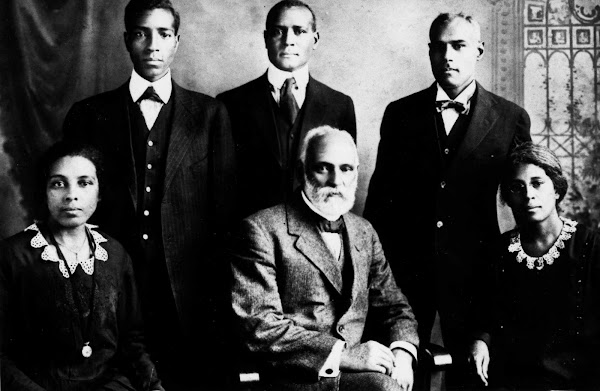As the time for their wedding approached, Elise and Edwin planned their nuptials in a series of letters, like this one she wrote that is dated July 4th, 1920. Teddy's favorite cousin, Rosalie Mickey, was visiting New York and planning her own wedding, which unlike Teddy and Elise's, was to be a formal one.
Dear Heart,
You will be surprised to know that Rosalee handed me your dearest letter while we were preparing for bed. Yes she is with me. They were filled up at the "Y" building and I just lost my roommate that morning so what else to do but take her to my house. And so we are quite at home. ...
I too have always wanted to know myself in white satin and veil and orange blossoms; it has been one of my life's dreams. I shall have me a white dress however for the reception. And there shall be a few other bits of finery and we'll only miss the veil but it can't be helped. So let us forget what we might have done and perfect what we shall do.
I am very sorry Marie is still ill. Had a letter from her yesterday, very pessimistic, but nothing can disturb the tranquility of my mind. I am treading on air air, happy? I should say! When ever I allow my mind to dwell on our immediate future, my heart goes pounding away, carrying me off on a wave of happiness that frightens me and causes me to send up a silent petition to Him who holds our destinies acknowledging my unworthingess and begging a long, long life and a continuance of youth that I might enjoy -- you. ...
So dearest boy, go right ahead, do what you think best and when you come here we can talk of the Studio. The biggest thing on that is the camera but we need a few furnishings for our house first.
For today -- bye bye. Rosalee is asleep or else I'm sure she'd say she arrived safely and is very comfortable.
Dare I hope to be surprised with another letter tomorrow?
Your very own
Liza
Elise's first letter to Teddy was followed by a second, in which she expresses her frustration that he is not only unable to visit her in New York but also uncommunicative. She is resigned to continuing to make their plans by mail.
My dear Mr. Edwin Augustus,
I am at a loss "where to start to begin to commence" talking to you. For the first time that I can remember, I find it hard to write. Of course I had been hoping, wishing, longing to see you this month and had my mind all set on our last heart to heart talk, the probable settlement of business, a little while of "just us" away off to ourselves, up the Hudson, maybe. Now I must tear that up, rout it out and replace that by planning my home coming.
Well, I have waited, I am waiting and can still wait. Am not at all in any hurry. I'm working, you see, and the job's mine as long as I want it. Had to do something, this was offered and it looked better than hunting when I was very much in need.
You know how much I enjoy telling you things and the pleasure there would have been in writing you every day if I had had the slightest encouragement, but far be it from me to thrust unwelcomed missives at you. If you wanted to know what I was doing the simplest thing to have done was to write. ...
Now then here's a try at what I think. Since you're not coming here, I'll begin immediately to look up studio paraphernalia and as soon as I find something worthwhile will let you know so you may cash up.
I had hoped we could use two rooms of the apartment across the hall for the Studio but that is rented, is it now? Could I have your studio for a dark room? It's almost impossible to discuss this in this manner.
What do you say to my coming home first and fixing the Studio after I'm there. I could get the camera and some things that could not be very easily ordered and then after the party get to work on that? As to my thots on the "party." It would please me much to have you come here for me and have done with it with as little fuss as possible, and you see there wouldn't be any fuss expected on this end.
But to come home and have it there means that your family and my family and their friends and acquaintances expect us to have a show. It would be better if there was lots of money of course. There have been dreams of white satin and floating veils, flowers, music etc., etc. etc. But I've had to come down out of the clouds very often that I'm quite used to it.
... As to the time, how about September? One year since I've seen you. How I long for the feel of your arms about me, the thot sends the blood rushing to my brain. ...
I have no idea of your idea of "taking me off properly" so you'll have to let me hear from you. And for God's sake don't wait two months again or I won't be responsible for what I may do. ...
Well, sweetheart, it's up to you, fix your nest and then come get your bird -- and "we'll live happy ever after" -- provided you promise not to fuss at me over the table during mealtimes -- it's bad for digestion. ...
With all my love, and longing for you. I am your very own
Liza
Meet Theo Lockrow: 2025 Vibrant Leader Intern
4 weeks ago








